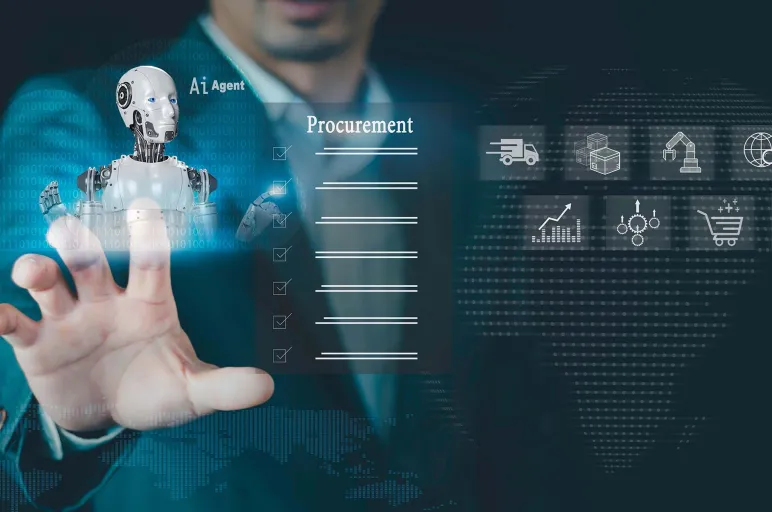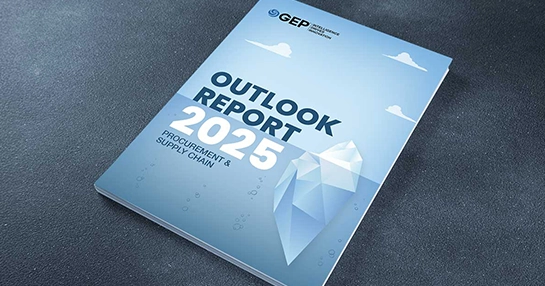
How Procurement Agent Orchestration is Silently Transforming Business Operations
- Select a procurement category to run a pilot program for testing agent orchestration before deployment.
- Map procurement workflows accordingly to identify inefficiencies where intelligent agents can make an immediate impact.
- Integrate with existing systems instead of replacing them to implement procurement agent orchestration.
June 12, 2025 | Procurement Software 6 minutes read
Procurement is going through massive changes, necessitating AI-driven solutions to synchronize operations for heightened user experience and smarter decisions.
But most companies still operate with fragmented systems, leaving procurement teams to put up with disconnected tools and poor spend visibility. The ensuing chaos means millions of dollars lost through missed opportunities and operational inefficiencies.
Forward-thinking procurement leaders know acquisitions do not ensure success but orchestrating existing capabilities into a cohesive system do help companies achieve that. And this is precisely where procurement agent orchestration comes into play. It's a strategic approach that synchronizes scattered processes with intelligent agents working together seamlessly.
Ready for Growth? GEP Has the Answers
Transform your business with our AI-powered procurement and supply chain software and services
Why Do AI-Driven Procurement Agent Orchestration Systems Matter?
Procurement continues to operate in silos, which too are often disconnected. And it is apparent from certain scenarios — for example, finance reviews budgets separately from sourcing activities; legal examines contracts without considering supplier relationships; operations places urgent orders without looking at strategic sourcing opportunities. Such disconnected operations lead to delays, errors, and missed savings opportunities.
Procurement agent orchestration platforms can integrate and station intelligent agents across functions to remove the silos. For a purchase request, these orchestrated agents analyze requirements, check budget availability, assess supplier performance, and accordingly routes approvals optimally.
Cost reduction is just one dimension of value creation. The impact usually stretches beyond operational efficiency. Companies can gain unprecedented visibility into their procurement function through the constant monitoring and analysis.
Risk mitigation has become proactive through orchestrated agent networks, with multiple specialized agents enabling constant monitoring of different risk factors. And in case of supply disruptions, these agents can automatically share alternative sourcing recommendations. Automated categorization and trend analysis provide clarity into spending patterns. Supplier risks are identified and addressed before they cause disruptions. Contract compliance happens automatically, without the need of manual reviews.
How to Implement Procurement Agent Orchestration for Greater Impact
Successful implementation begins with comprehensive process analysis. Companies must therefore map current workflows to identify inefficiencies in order to uncover hidden bottlenecks and redundant activities due to manual processes.
Stakeholder alignment is key to long-term success. Procurement, finance, operations, and legal teams must collaborate on workflow design and success metrics. Change management initiatives should therefore address concerns proactively and communicate benefits through concrete examples and use cases. Typically, resistance results from uncertainty on role changes and process modifications.
Technology architecture requires careful consideration of existing systems and future needs. Orchestration platforms must integrate seamlessly with ERP systems, supplier portals, and approval workflows. Data quality becomes critical since intelligent agents depend on accurate information to make effective decisions.
Pilot implementations are the most practical way forward. Companies need to select specific categories or business units for initial deployment. This will enable procurement teams to refine processes and accordingly take corrective actions before a full rollout.
Choosing the right use case, training programs can be designed in a way to understand both technical capabilities and process changes. What this means for end users is that they need to understand how agent-driven systems differ from traditional approaches.
Governance frameworks establish oversight and continuous improvement mechanisms. Regular performance reviews assess key metrics and identify areas for optimization. Clear escalation procedures handle exceptions that automated systems cannot resolve independently. Feedback loops ensure agents learn from outcomes and improve over time.
What are Key Components of Procurement Agent Orchestration?
Intelligent routing agents form the operational backbone of orchestrated systems. These agents analyze purchase requests using multiple criteria including amount, category, supplier history, and business unit requirements. Dynamic routing adjusts pathways based on approver availability and workload distribution. Machine learning capabilities improve routing decisions through outcome analysis.
Contract intelligence agents provide automated compliance monitoring and management. These specialized agents can track key dates, performance metrics, and renewal opportunities across the entire contract portfolio. Alert systems notify stakeholders of required actions before deadlines approach. Historical performance data informs negotiation strategies and supplier evaluations.
Supplier relationship agents maintain continuous monitoring of vendor performance and risk factors. These agents track delivery metrics, quality indicators, and financial stability in real-time. Risk scoring algorithms identify potential issues before they impact operations.
Communication agents facilitate proactive engagement with suppliers based on performance trends.
Spend analytics agents process procurement data continuously to identify patterns and opportunities. Advanced algorithms recognize cost-saving possibilities and compliance issues across spending categories. Benchmarking capabilities compare performance against industry standards and internal targets. Predictive analytics forecast future spending requirements and budget variances.
Workflow automation agents eliminate manual handoffs between process steps. Document generation, approval notifications, and status updates happen automatically based on predefined triggers. Integration agents ensure information flows seamlessly between systems while maintaining data integrity.
Exception handling agents tackle situations that otherwise would have required human intervention. Reporting agents provide real-time visibility into procurement performance through customizable dashboards. These agents generate metrics, identify trends, and create actionable insights for different stakeholder groups.
How Has AI-Driven Orchestration Changed Procurement?
Agentic AI systems have transformed procurement by augmenting human decision-making with intelligent automation. These autonomous agents can reason through complex scenarios, learn from outcomes, and adapt their behavior over time. Unlike simple automation, agentic AI can handle unexpected situations and make contextual decisions without human intervention.
Machine learning algorithms now identify optimal suppliers using comprehensive criteria analysis. Natural language processing agents extract key terms from contracts and identify potential risks automatically.
Predictive analytics agents can anticipate demand fluctuations and supply disruptions before they occur, while decision support agents can provide recommendations based on multiple data sources and business objectives. This has led to faster decision-making (from days and weeks to just hours) through parallel processing and automated workflows. Real-time data analysis ensures decisions reflect current market conditions and organizational requirements.
Strategic focus has shifted dramatically within procurement organizations. Transactional and repetitive activities have become automated, freeing professionals for value-added work.
Category management gets deep attention through data-driven insights. Supplier relationships improve through consistent monitoring and proactive engagement. Furthermore, innovation partnerships become possible through freed capacity and enhanced supplier intelligence.
Compliance monitoring has evolved from reactive auditing to proactive prevention. Automated systems identify policy violations before they create problems. Audit trails are automatically generated for every transaction with complete documentation. Regulatory changes trigger process update and documentation requirements are consistently met sans manual oversight.
Don’t Wait To Be Disrupted. Be the Disrupter.
Explore how autonomous AI agents will transform procurement and supply chain in this GEP whitepaper
What's the Future Outlook?
Procurement agent orchestration process marks the beginning of a fundamental transformation rather than a final destination. Agentic AI will become increasingly autonomous and deft at complex negotiations and strategic decisions. These advanced agents will have the ability to reason through multi-faceted scenarios, negotiate with supplier systems directly, and optimize procurement strategies based on real-time market conditions.
Companies prioritizing procurement agent orchestration will gain significant competitive advantage that will grow over time. Success in procurement will depend on the ability to design and optimize intelligent agent networks that can quickly adapt to market shifts.
Explore GEP’s AI-Powered Procurement Orchestration Platform
FAQs
What Technologies Enable Effective Orchestration of Procurement Agents?
Advanced technologies such as artificial intelligence (AI), machine learning (ML), and robotic process automation (RPA) can enable procurement agents to perform at their maximum efficiency. Enterprises leverage cloud-based, AI-powered platforms and blockchain for transparency, while IoT gets leveraged for efficient real-time data coordination. Further, APIs and middleware make sure that the integration is seamless, while advanced analytics that the platform offers helps with optimizing decision-making, enabling scalable procurement workflows across multi-agent systems.
How do Intelligent Agents Transform Procurement?
Repetitive tasks getting automated are often the immediate effect that gains visibility. Intelligent agents enhance decision-making with predictive analytics and enable better supplier negotiations. They also enable real-time market analysis, optimize inventory, and ensure compliance. These intelligent agents turn procurement into a valuable strategic asset by delivering insightful data analysis, making workflows more efficient, and reducing mistakes.
What are the Risks of Poor Orchestration in a Multi-Agent Procurement Environment?
Poor orchestration leads to miscommunication, duplicated efforts, and inefficiencies. Data inconsistencies, delayed decision-making, and increased costs arise from uncoordinated agents. Compliance risks, supplier mismanagement, and disrupted workflows can damage relationships and profitability. Lack of synchronization may also cause missed opportunities, reduced scalability, and compromised strategic alignment in procurement processes.
How is Procurement Agent Orchestration Different from Automation?
Orchestration and automation have different use cases. Procurement agent orchestration ensures strategic alignment, adaptability, and real-time data sharing across agents. Automation, on the other hand, prioritizes efficiency in isolated processes, lacking holistic coordination.
Procurement agent orchestration enables smooth coordination of multiple agents to handle complex processes and make better decisions. Automation deals with simple, repetitive tasks based on set rules, without involving any interaction between agents.



